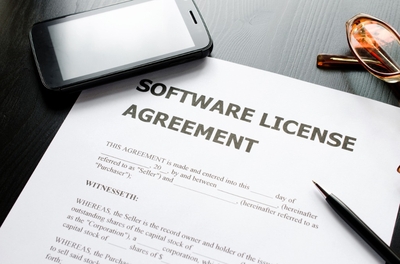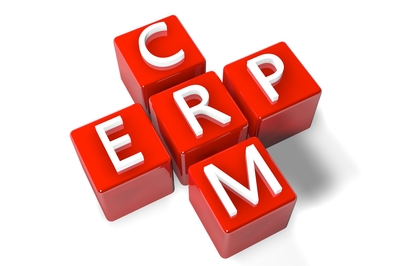12 CRM tasks to do this Christmas
So, we are now at the end of another year. The next few weeks until end of the first week in 2020 are a great time to reflect and plan for the New Year.
For many of us working in Sales and Marketing, those who are working will likely have some additional time on their hands as meetings start to dry up from today, so this can be an ideal time to look at how you can get your team to update and fine-tune your CRM to maximise those first few months of 2020.
The Tasks
So, I have chosen 12 key tasks that I think you should look to complete over these next few weeks across both Sales and Marketing departments and in no particular order:
1. Top 20 Accounts key contacts. Ensure that the team have updated who is still there or who has left and flag this fact. Make sure for at least your key contacts that they have their correct job titles (use LinkedIn to confirm). At the same time make sure you have their first name in correct. Personalisation continues to be a key themes in marketing communications and you want to be accurate here.
2. Leavers as Prospects. Those contacts who have left, make a list (this should be easy enough to do with a tag or flag (speak to your Administrator on the best way to do this). Review and make a short list if they are worthwhile contacts to follow or contact or indeed connect with. Next find out where they have gone. Most people update their LinkedIn profile when moving to a new job within the first 30-90 days. Now these could be new Leads for the New Year or ‘low hanging fruit’ as they say.
3. Account Profile enrichment. Make sure you review all key information and that your top Accounts and indeed all your Customer Accounts have accurate up-to-date information. So, again using LinkedIn, you can review their industry and also number of employees. This can be a good indicator for many businesses and may also show your growth in numbers (if over 30 employees) and can help you size your clients very easily. Take the opportunity to any new key contacts you come across. The key here is ‘back-filling in critical information. A good example here could be Year End. For many companies, knowing when this is, may impact upon their sales cycle. If you have large amount of Account data to tidy up, you may want to consider a Managed Services or exporting of data to a data enhancement agency, for example Experion.
4. Update LinkedIn profiles. From a marketing perspective, it is sometimes useful to review your key team members own LinkedIn profiles. It may be that many people have only put in the 'bare bones' with no overview of their role or the company in their summary. You can encourage this by providing some template descriptions on the company and their role with key words known to resonate and this will help give a more consistent corporate profile and persona.
5. Connecting on LinkedIn. Encourage your team to make new connections over this festive period with key contacts helping to build your corporate network ‘reach’. Many people are delving into their own profile at this period and are more likely to be more active and quickly accept an invitation. Remember to send a personal invite to connect and don’t just use the standard invite ‘I’d like to connect’. This will give you a better conversion ratio.
As stated earlier, with far less interruptions and day to hassle, this is a great time for reflection and ideally, hangovers notwithstanding! conduct some deep-dive analysis. The period from Boxing Day to New Years Eve can be a ‘grey’ in-between period’ if you are working, but make the most of this time since now you are least likely to be interrupted by any last minute projects. So…
6. Review last 6 months Leads. Check out any evolving patterns here. So the obvious of course is the source of these Leads, but also check out when these leads were created (if from a website form) you will have exact detail and don’t forget to look at key search terms. Have these been entered into the Lead detail? If not, ask why your sales team are not giving you this information. You should be constantly reviewing long search terms and not just as in our case for example, using ‘CRM’ as a key word. Check if this level of details is being asked and tracked and if not you will need to your next briefing for your team.
7. Confirm your best Lead Generation sources. Have a deep-dive into why and how these sources are working. Look at any changes in patterns. Also, as a useful metric, I used to review each year the total % of Leads to Visitors as a metric to see if this ratio was being maintained. It enabled me to pinpoint a drop-off and change my approach.
8. Blogs. These can be incredibly useful, but also can be overlooked in any analysis since sometimes direct links to Leads may not be so clear. Blogs and Post can give you lot of ‘reach’ and social media exposure, so have a look at these again to see if any can be updated or revisited for say next year’s list.Don’t forget to ask the Sales Team here as well, they may have some anecdotal evidence from Leads, but more importantly are a great source of ideas. What questions are their Leads/Prospects asking them?
9. Check contacts status. Use the “last modified date” and review the bounces on your last few emails. And don’t forget to update the record. This will help improve your ‘Open’ rates and reach, but sometimes can be forgotten. It can be tedious if you do not have an integrated marketing solution such as Dynamics 365 Marketing or Salesforce’s Pardot for example. But if are using a stand-alone Email Marketing solution like Mailchimp then it is important to review to ensure you are in sync with your data. Research to see if there is an integration available direct or via 3rd party app or if in doubt ask ourselves. There may be another route to sync data between CRM and Email we are aware of. But, if there is no integration in place already, then this should be something to consider for 2020.
10. Share ‘bounce’ information. This info can also be useful for sales teams, so don’t be afraid to share ‘bounce’ information especially on key accounts. This may enable the Sales Team to go back to their LinkedIn and check if they have missed say a key contact/influencer moving on (see comments above) and review.
Planning for 2020
Looking forward now to next year, you should already have some ideas of what your focus will be and possibly campaign ideas. However, this is also a good time to do some research on the key apps you are using, so my final two key suggestions are:
11. Review the Road-Map of your application. Whilst this post is not a deep-dive into recent CRM Application road-maps, this is worthwhile task. But, also don’t forget most vendors only announce their next release feature list publicly within a few months of planned release. Below are some links for each of the following applications on recent changes: Dynamics 365, Salesforce, Pipeliner CRM, SAGE CRM, My view here is you should be looking at how either better Automation or AI may help both you and your sales team.
12. Consider Sales Enablement. This is something that can be a large subject and will also depend to some extent on the nature of your industry and sales cycle. So for example, if you have multiple influencers in your deals then Sales Enablement software should be something to consider. Within this review any existing capabilities within your current system to enhance the Sales Team usage, adoption and provide them with more information. For example, Dynamics 365, has Sales Insights and Customer Insights. Although probably the most common extra sales enbabler is to look again at LinkedIn Sales Navigator. With recent licencing changes, this may now be a more attractive proposition and there are key benefits with sync to CRM.
Whilst this post is not about Digital Transformation, inevitably, you are knowingly or not probably embarked on this journey in any case and are looking at how you can use new technology to positively impact sales, marketing and customer service.
These are just a selection of ideas for this Festive period if you are working where the day to day pressure is less and you can take the opportunity this gives you to spend some time to review and plan. My suggestion here is to focus on just one task per day (in between festivities) to help move your own system forward and ensure you are setting yourself up for a successful 2020.
All that remains is for me to wish everyone who has commented/liked or just taken the time to read my Posts this year, a very Merry Christmas and Happy and Healthy New Year.
16th December 2019



